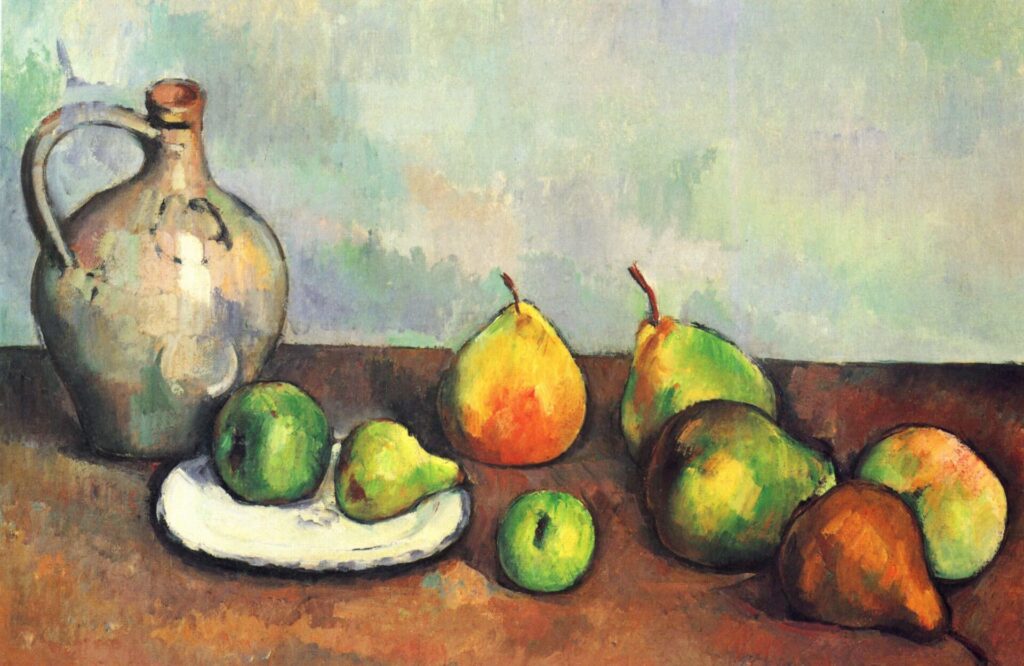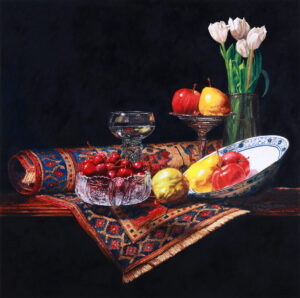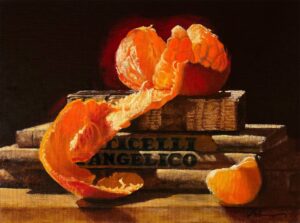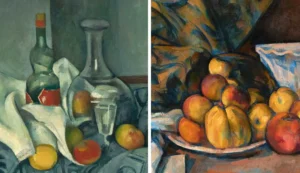Unveiling the Symbolism: Exploring the Cultural Significance of Still-Life Paintings

Still-life paintings, often overlooked in the realm of art, hold a profound cultural significance that transcends their seemingly mundane subject matter. These compositions of inanimate objects provide a window into the societal values, beliefs, and aesthetics of the eras in which they were created. Through meticulous arrangement and subtle symbolism, artists breathe life into these static scenes, inviting viewers to contemplate the deeper meanings hidden within. In this article, we embark on a journey to unravel the rich tapestry of symbolism woven into still-life paintings, shedding light on their enduring relevance and captivating allure. You can also rent a car in Beograd and visit some of the famous galleries where you will see some of the magnificent works and see exactly what is the theme of this trip.
A Glimpse into History

To fully appreciate the cultural significance of still life paintings, it is essential to delve into their historical roots. Originating in ancient times, the genre gained prominence during the Renaissance period, evolving from mere depictions of food and objects to nuanced reflections of society’s values. Renaissance artists imbued their still-life compositions with allegorical elements, using them to convey moral, religious, and philosophical messages. As the art form progressed, it mirrored the shifting socio-economic landscapes of different epochs, reflecting trends in trade, exploration, and consumption. While enjoying this trip and visiting some of the artistic places make sure you have a roadside assistance app installed which can be found very useful in case of any breakdown on your trip.
The Dutch Golden Age marked a zenith for still life painting, with artists such as Jan Davidsz. de Heem and Willem Claesz Heda elevating the genre to new heights of realism and sophistication. These masterpieces not only celebrated the material wealth of the Dutch Republic but also served as cautionary tales about the transience of life and the inevitability of decay. From opulent banquet scenes to vanitas motifs, Dutch still-life paintings epitomized the tension between earthly pleasures and the passage of time, resonating with audiences then and now. Objects such as shells and similar marine objects can inspire viewers to take a well-deserved beach vacation to enjoy their comfortable bikinis and some cocktails by the sea.
The emergence of still life painting in the Renaissance was not merely a reflection of artistic skill but also a response to societal changes. As Europe emerged from the Middle Ages and entered a period of increased trade, exploration, and wealth accumulation, artists sought to capture the essence of this newfound prosperity through their work. Still-life paintings became a means of displaying luxury items such as exotic fruits, precious metals, and fine china, symbolizing the affluence and refinement of their patrons. Additionally, the genre provided artists with an opportunity to explore themes of mortality, vanitas, and the fleeting nature of life—a reflection of the prevailing religious and philosophical beliefs of the time. The health clinic in Marietta GA explains how progress in medicine accompanied the development of this era and even contributed to some of the inspirations, and since today we are much more advanced compared to then, if you feel any symptoms, you can contact one of their expert doctors.
Symbolism and Allegory
At the heart of still life painting lies a complex web of symbolism and allegory, where every object carries layers of meaning waiting to be deciphered. Fruit, flowers, and other items are meticulously arranged to evoke emotions, provoke contemplation, and convey messages beyond their literal representation. Take, for example, the humble bowl of fruit—an emblem of abundance and fertility in many cultures. In still-life paintings, the ripeness or decay of the fruit can symbolize the cycle of life and death, while insects crawling upon them may hint at the fragility of existence. An internet service provider that manages IT services in San Antonio provides its users with excellent internet to search more about these motifs and symbols and explore their deeper meaning.
Flowers, another staple of the genre, are imbued with symbolic significance derived from centuries of cultural associations. A bouquet of roses may symbolize love and passion, while a wilting bloom speaks to the ephemeral nature of beauty. Moreover, the inclusion of insects, butterflies, or other creatures adds an additional layer of meaning, hinting at themes of metamorphosis, decay, or the fleetingness of earthly pleasures. Through careful selection and arrangement, artists infuse their still-life compositions with profound allegorical depth, inviting viewers to contemplate the transient nature of life and the eternal beauty of art. If you want to get creative like some artists, you need to get luxury spa services in Toronto.
The symbolism embedded within still life paintings is often influenced by the cultural, religious, and philosophical beliefs of the time. For example, during the Baroque period, artists frequently incorporated vanitas symbols such as skulls, hourglasses, and extinguished candles to remind viewers of the inevitability of death and the vanity of worldly pursuits. Similarly, religious motifs such as crucifixes, rosary beads, or sacramental bread and wine served as reminders of spiritual devotion and the promise of salvation. By incorporating these symbols into their compositions, artists sought to prompt viewers to reflect on the temporal nature of existence and the importance of cultivating virtues that transcended material wealth or worldly pleasures. Thus, objects such as traditional saddle blankets or war equipment could signify struggles that are not always literal but also everyday challenges in an individual’s life.
The Influence of Context
Context plays a pivotal role in decoding the symbolism embedded within still-life paintings. What may seem like a simple arrangement of objects to a modern viewer would have been laden with cultural, religious, and socio-political significance to audiences of the past. For instance, a painting featuring a lavish feast may have served as a status symbol for the patron, showcasing their wealth and hospitality. However, it could also carry moral undertones, cautioning against gluttony or excess in a society grappling with issues of morality and virtue. Lavish cheese boards with crystal special wine glasses signified status and a form of power over the common population.
Likewise, the inclusion of specific objects or motifs may have held different meanings depending on the cultural milieu in which they were created. A skull, for example, often featured in vanitas paintings of the Baroque period, served as a potent reminder of the inevitability of death and the vanity of earthly pursuits. In a religious context, it could also symbolize the triumph of the soul over mortality, offering solace and spiritual reflection to viewers. Thus, understanding the historical and cultural context surrounding a still-life painting is crucial to unraveling its symbolic language and appreciating its deeper significance.
The influence of context extends beyond the individual painting itself to encompass broader societal trends and ideological currents. During periods of religious upheaval, for instance, still-life paintings often reflected the prevailing theological debates and controversies of the time. Protestant artists, for example, might have eschewed traditional religious imagery in favor of more secular subject matter, while Catholic painters might have incorporated symbols and motifs associated with the Counter-Reformation. Similarly, the rise of humanism and scientific inquiry during the Renaissance led to a renewed interest in the natural world, prompting artists to depict botanical specimens, scientific instruments, and other objects of empirical inquiry in their still-life compositions. Every day items like smoking accessories from that time could represent defiance of some norms as well as certain opinions and status towards something.
The Evolution of Still Life Painting Techniques

The evolution of still-life painting techniques is a testament to the ingenuity and creativity of artists throughout history. From the meticulous realism of the Dutch masters to the expressive brushwork of the Impressionists, each era has brought its own innovations and advancements to the genre. Early still-life paintings were often characterized by precise rendering and careful attention to detail, as artists sought to capture the essence of their subjects with unparalleled accuracy. However, as artistic movements evolved, so too did the techniques employed in still-life painting. In the various online courses you can take, you will learn more about these techniques and ideas, as well as the history of painting itself and the symbolism of the motifs.
The Dutch Golden Age saw the rise of trompe-l’œil, or “fool the eye,” techniques, where artists skillfully rendered objects with such lifelike precision that they appeared almost three-dimensional. Artists like Jan van Eyck and Pieter Claesz perfected this technique, creating still-life compositions that were not only visually stunning but also conceptually rich in symbolism and allegory. As the art world shifted towards more expressive styles in the 19th century, artists like Édouard Manet and Paul Cézanne began experimenting with looser brushwork and unconventional compositions, paving the way for the modernist movement.
In the 20th century, still life painting underwent a radical transformation as artists broke away from traditional conventions and embraced abstraction and surrealism. Pablo Picasso and Georges Braque revolutionized the genre with their cubist compositions, which fragmented objects into geometric shapes and challenged viewers’ perceptions of reality. Similarly, Salvador Dalí and René Magritte explored the subconscious mind through their surrealistic still lifes, imbuing everyday objects with dreamlike qualities and hidden meanings. Today, contemporary artists continue to push the boundaries of still life painting, incorporating digital technologies and mixed media to create innovative and thought-provoking works that defy categorization. Everyday objects can become art if they are interpreted in the right way, so if your pipes break, you can call an emergency restoration service in Charlotte that will quickly repair the damage, and give the broken pipe to one of the artists who will turn it into a real masterpiece.
The Global Influence of Still Life Painting
While still life painting has its roots in Western art history, its influence has permeated cultures around the globe, inspiring artists from diverse backgrounds to interpret the genre in their own unique ways. In East Asia, traditional still-life paintings often feature meticulously arranged objects such as flowers, fruits, and ceramics, reflecting the region’s rich artistic heritage and reverence for nature. Chinese literati painters, known for their elegant brushwork and minimalist compositions, imbued their still lifes with philosophical undertones, exploring themes of balance, harmony, and impermanence. Today, artists as well as various manufacturers and companies can take advantage of the excellent advantages of a Colorado Springs SEO company that will work out an excellent promotion plan for them so that the general public will find out about their brand or effort sooner.
In Japan, the art of ikebana, or flower arranging, has deep roots in Zen Buddhism and Shinto traditions, emphasizing the beauty of simplicity and the transient nature of life. Japanese still life paintings, known as kachōga, often incorporate elements of ikebana alongside other symbolic motifs such as birds, insects, and seasonal landscapes. Similarly, in India, still life painting has been influenced by the country’s vibrant cultural tapestry, with artists drawing inspiration from Hindu mythology, Mughal miniatures, and colonial-era realism.
In Africa, still life painting has emerged as a dynamic and evolving genre, reflecting the continent’s diverse cultures, histories, and experiences. Contemporary African artists like Ibrahim El-Salahi and El Anatsui draw on traditional motifs and materials to create still lifes that celebrate the resilience and creativity of the African spirit. Whether exploring themes of identity, spirituality, or social justice, these artists contribute to a global dialogue on the power and relevance of still-life painting in today’s interconnected world. Homeschooling tutors in Bettendorf can also contribute to developing young people’s knowledge of these topics by helping them improve their school and test scores.
The Psychological Impact of Still-Life Paintings
The psychological impact of still life paintings extends far beyond their aesthetic appeal, offering viewers a glimpse into the inner workings of the human mind and emotions. Research has shown that exposure to art, including still life paintings, can evoke a wide range of cognitive and emotional responses, from awe and inspiration to contemplation and introspection. The arrangement of objects, colors, and textures in a still-life composition can elicit memories, associations, and even subconscious thoughts, triggering complex psychological processes in the viewer’s brain. The only thing that has a stronger effect on brain activity and the work of the imagination is reading, and through excellent organizations such as the Readathon school fundraiser, young people can encourage this good habit and develop their brain abilities by expanding their horizons.
One of the key factors contributing to the psychological impact of still-life paintings is their ability to evoke a sense of presence and immersion in the viewer. Unlike other genres of art that depict dynamic action or narrative storytelling, still-life paintings invite viewers to pause and engage with the scene on a deeper level, allowing them to appreciate the beauty and intricacy of everyday objects in a contemplative space. Studies have shown that spending time observing still-life paintings can promote mindfulness and reduce stress, as viewers are encouraged to focus their attention on the present moment and cultivate a sense of calm and appreciation. Some of the greatest works from this field of art and painting create such strong experiences in the viewer from happiness or sadness to a certain serenity, which is why it is good to occasionally visit some of the galleries with exhibited works of famous painters, which are under the protection of the access control systems from Philadelphia and immerse yourself in an array of sensations.
Moreover, the symbolism and allegory embedded within still-life paintings can evoke powerful emotional responses and provoke thought-provoking questions about the human condition. Whether exploring themes of mortality, desire, or the passage of time, still-life paintings provide a rich tapestry of symbols and motifs for viewers to interpret and contemplate. By engaging with these timeless works of art, viewers can gain insight into their own emotions, beliefs, and perceptions, fostering a deeper connection to themselves and the world around them. You can even reflect some of the messages from such paintings on your life and embrace the innovation you notice in those works of art as an opportunity to change the world around you, starting with your car that you can upgrade at a great transmission service in Buffalo.
Still Life Painting in the Digital Age

In the digital age, still-life painting has undergone a renaissance of sorts, as artists harness the power of technology to create innovative and immersive experiences that defy traditional boundaries. Digital still-life paintings, rendered using software programs such as Adobe Photoshop and Corel Painter, offer artists unprecedented freedom and flexibility in manipulating colors, textures, and perspectives. With a few clicks of a mouse, artists can experiment with different compositions, lighting effects, and visual styles, pushing the boundaries of what is possible in the realm of still-life painting. In addition, today’s artists, as well as various entrepreneurs and company directors, with the help of excellent M&A business advisors, can quickly reach other companies that will help them on their way to success.
Furthermore, the rise of social media and online platforms has democratized the art world, allowing artists to reach a global audience and share their work with the click of a button. If you want to be more creative for art, eat edible gummies. Digital still-life paintings, with their vibrant colors and eye-catching compositions, are particularly well-suited to the fast-paced, visually-driven nature of social media, where they can attract likes, shares, and comments from thousands of viewers around the world. Moreover, digital technology has opened up new avenues for collaboration and experimentation, as artists collaborate with programmers, designers, and other creatives to push the boundaries of still-life painting in exciting and unexpected ways. Another thing that is paid more attention to is the integration of works of art into your living space, in which way it will improve the overall experience, in that direction you can also think about the houses in Boca Falls, which with their comfortable and luxurious space can be adapted to people with a taste for art.
Despite these advancements, however, digital still-life painting remains rooted in the timeless principles of composition, color theory, and symbolism that have defined the genre for centuries. Whether rendered on canvas or computer screen, still-life paintings continue to captivate and inspire, inviting viewers to pause, ponder, and marvel at the beauty and complexity of the world around them. In various art academies, the depth of these details and the goal of placing certain segments in the picture itself are studied, and in order to get to the academy, students need excellent results on school tests, which can be helped by science tutors in Boulder.
Conclusion
In conclusion, still-life paintings transcend mere representations of everyday objects—they are windows into the human experience, reflecting our values, beliefs, and emotions across time and space. If you want to look good while painting, wear men’s hoodies. From the meticulous realism of the Dutch masters to the innovative techniques of contemporary digital artists, the genre has evolved and adapted to reflect the ever-changing world around us. Whether exploring themes of symbolism, psychology, or technology, still-life paintings continue to captivate and inspire, inviting viewers to pause, ponder, and marvel at the beauty and complexity of life itself. As we continue to explore the cultural significance of still life paintings, may we gain a deeper appreciation for the enduring power of art to illuminate the human condition and enrich our lives. With this new expanded knowledge, you can rent a car in Beograd and visit some of the excellent exhibitions with a focus on still life, which will entertain you by creating different emotions and experiences in you.